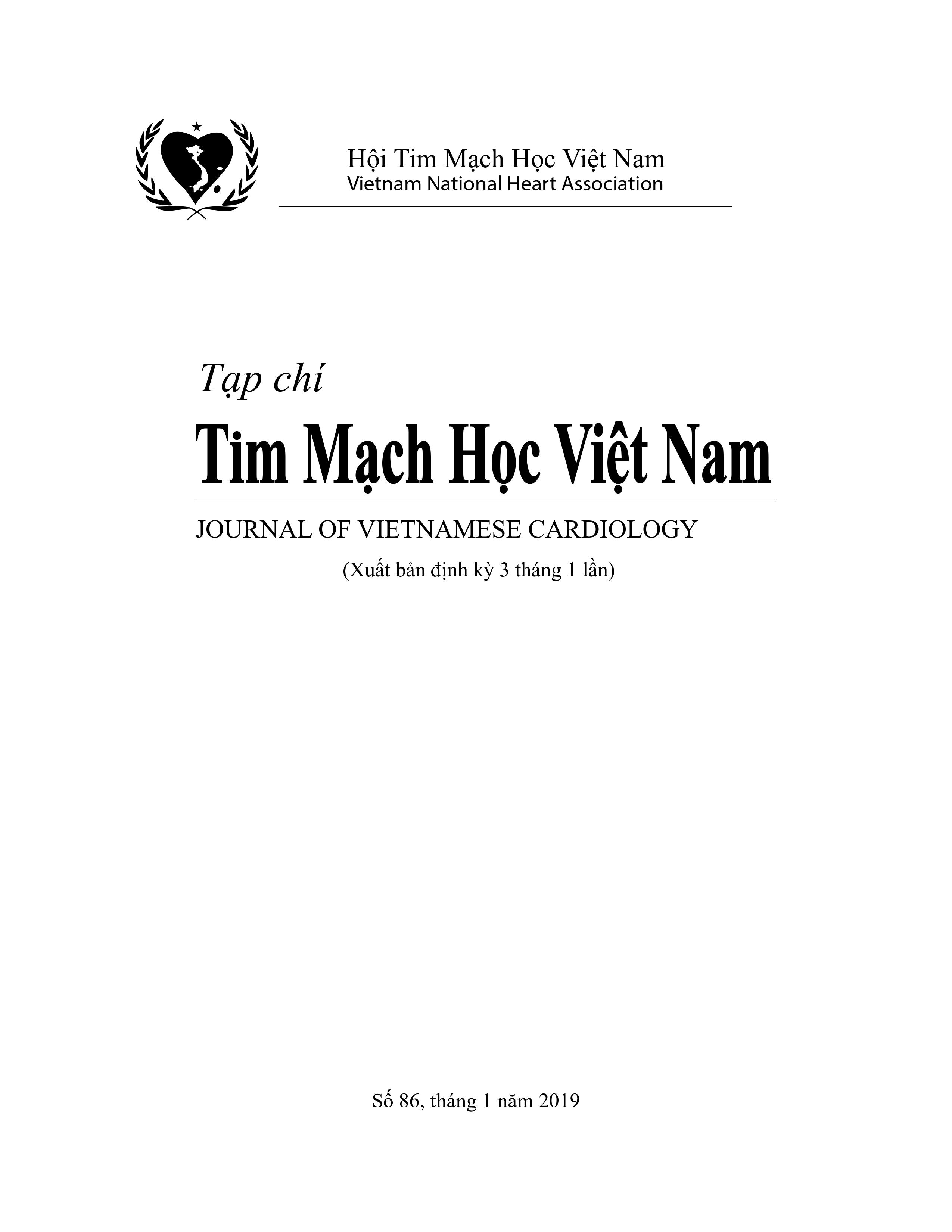Ứng dụng giải trình tự gen toàn bộ vùng mã hoá (exome) phát hiện biến thể mới trên gen acyl-CoA dehydrogenase chuỗi rất dài (ACADVL) ở bệnh nhân bệnh cơ tim
Tóm tắt
Cơ sở nghiên cứu: Ở nhóm bệnh cơ tim vô căn, sự trùng lặp trong biểu hiện lâm sàng gây hạn chế cho việc chẩn đoán và điều trị, do đó, việc nghiên cứu di truyền về các gen gây bệnh là rất cần thiết.
Phương pháp nghiên cứu: Chúng tôi ứng dụng kỹ thuật giải trình tự thế hệ mới (NGS) nhằm khảo sát 142 gen có liên quan đến các bệnh cơ tim ở 9 bệnh nhân thuộc Bệnh viện Nhi đồng 2.
Kết quả: Bằng chiến lược giải trình tự toàn bộ vùng mã hoá (WES), qua quá trình phân tích và sàng lọc phân tử, chúng tôi đã xác định được 63
biến thể hiếm thuộc 19 gen, bao gồm 27 biến thể đồng hợp tử và 36 biến thể dị hợp tử. Tần số biến thể của gen TTN chiếm nhiều nhất với 13 biến thể. Tiếp theo là các gen SYNE1 và MYPN lần lượt có 9 và 7 biến thể. Mỗi gen NDUFV2 và SCN5A có 5 biến thể, các gen COX15 và SYNE2 đều có 4 biến thể. Chúng tôi xác định được 2 biến thể của mỗi gen DMD, KCNE1, NEBL, RBM20 và 1 biến thể của các gen ACADVL, AKAP9, CAV3, DSC2, DSG2, DSP, MYH6 và NEXN. Trong đó, có 1 biến thể mới là đột biến dị hợp tử c.197G>A của gen ACADVL.
Kết luận: Các kết quả nghiên cứu di truyền trên sẽ góp phần vào việc chẩn đoán phân tử và tầm soát bệnh tim mạch được triệt để hơn.
Tài liệu tham khảo
1. Sisakian H. Cardiomyopathies: Evolution of pathogenesis concepts and potential for new therapies. World J Cardiol 2014; 6: 478 - 494.
![]()
2. Simpson S, Rutland P, Rutland CS. Genomic Insights into Cardiomyopathies: A Comparative Cross-Species Review. Vet Sci 2017; 4: 19.
![]()
3. Chen L, Cai Y, Zhou G et al. Rapid Sanger sequencing of the 16S rRNA gene for identification of some common pathogens. PLoS One 2014; 9: e88886.
![]()
4. Faita F, Vecoli C, Foffa I et al. Next generation sequencing in cardiovascular diseases. World J Cardiol 2012; 4: 288 - 295.
![]()
5. Morini E, Sangiuolo F, Caporossi D et al. Application of next generation sequencing for personalized medicine for sudden cardiac death. Front Genet 2015; 6: 55.
![]()
6. Alcalai R, Metzger S, Rosenheck S et al. A recessive mutation in desmoplakin causes arrhythmogenic right ventricular dysplasia, skin disorder and woolly hair. J Am Coll Cardiol 2003; 42: 319 - 327.
![]()
7. McKoy G, Protonotarios N, Crosby A et al. Identification of a deletion in plakoglobin in arrhythmogenic right ventricular cardiomyopathy with palmoplantar keratoderma and woolly hair (Naxos disease). Lancet 2000; 355: 2119 - 2124.
![]()
8. Norgett EE, Hatsell SJ, Carvajal-Huerta L et al. Recessive mutation in desmoplakin disrupts desmoplakin-intermediate filament interactions and causes dilated cardiomyopathy, woolly hair and keratoderma. Hum Mol Genet 2000; 9: 2761 - 2766.
![]()
9. Di Resta C, Galbiati S, Carrera P et al. Next-generation sequencing approach for the diagnosis of human diseases: open challenges and new opportunities. EJIFCC 2018; 29: 4 - 14.
![]()
10. Qiao D, Ameli A, Prokopenko D et al. Whole exome sequencing analysis in severe chronic obstructive pulmonary disease. Hum Mol Genet 2018; 27: 3801 - 3812.
![]()
11. Goh G, Choi M. Application of whole exome sequencing to identify disease-causing variants in inherited human diseases. Genomics Inform 2012; 10: 214 - 219.
![]()
12. Haskell GT, Adams MC, Fan Z et al. Diagnostic utility of exome sequencing in the evaluation of neuromuscular disorders. Neurol genet 2018; 4: e212.
![]()
13. Golbus JR, Puckelwartz MJ, Dellefave-Castillo L et al. Targeted analysis of whole genome sequence data to diagnose genetic cardiomyopathy. Circ Cardiovasc Genet 2014; 7: 751 - 759.
![]()
14. Schiff M, Mohsen AW, Karunanidhi A et al. Molecular and cellular pathology of very-long-chain acyl-CoA dehydrogenase deficiency. Mol Genet Metab 2013; 109: 21 - 27.
![]()
15. Boemer F, Fasquelle C, d'Otreppe S et al. A next-generation newborn screening pilot study: NGS on dried blood spots detects causal mutations in patients with inherited metabolic diseases. Sci rep 2017; 7: 17641.
![]()
16. Strauss AW, Powell CK, Hale DE et al. Molecular basis of human mitochondrial very long chain acyl-CoA dehydrogenase deficiency causing cardiomyopathy and sudden death in childhood. Proc Natl Acad Sci USA 1995; 92: 10496 - 10500.
![]()
17. Tucci S, Flögel U, Hermann S et al. Development and pathomechanisms of cardiomyopathy in very long-chain acyl-CoA dehydrogenase deficient (VLCAD(-/-)) mice. Biochim Biophys Acta, 1842: 677 - 685.
![]()
18. Gregersen N, Andresen BS, Corydon MJ et al. Mutation analysis in mitochondrial fatty acid oxidation defects: exemplified by acyl-CoA dehydrogenase deficiencies, with special focus on genotype-phenotype relationship. Hum Mutat 2001; 18: 169 - 189
![]()








